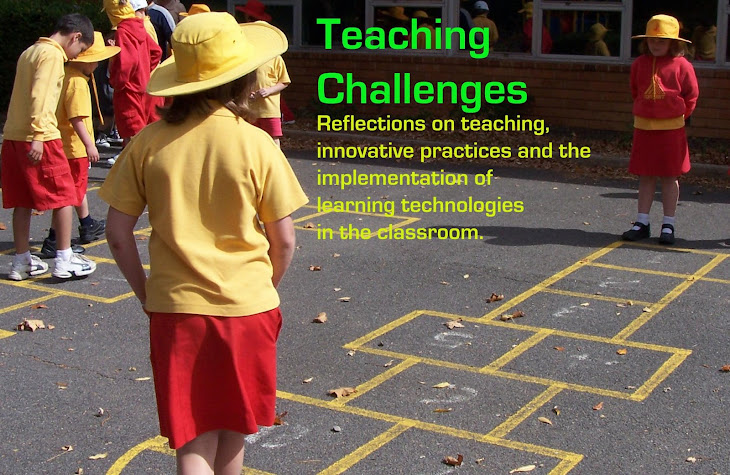
Last night my hubby and I watched an ad on TV introducing the new contestants in the Australian Biggest Loser - couples. We were pondering what sort of team would be more successful - married couple, mother/daughter, co-workers, teammates, sisters? While we probably won't watch the whole season, we will be interested to see what made the winning combo.
Discussion around teams has also featured at my work this week as we are preparing for a new school year. My school has a collaborative focus and every teacher works in a number of professional learning teams (PLTs) throughout the year.
Types of Teams
We have grade level teams where teachers plan, teach, assess and moderate together. These teams are meeting continually throughout the week, both formally and informally.
We have P-2 and 3-6 teams for administration, professional learning and growth. These teams meet every 1-2 weeks and consist of about 12 people.
We have committees that work on school focus areas for the year - this year these areas are Enrichment, Curriculum, Sustainability and The Arts. These teams work together on a range of projects including policy development, school curriculum, whole school events, writing applications for grants etc. Every staff member is expected to select one of these committees to contribute to. There are also committees that don't fit into the focus area for the year, and these people meet together to consider the school's needs in ICT, PE/Health, etc. Involvement in these committees is voluntary.
This year we are trialling a Budget committee. Each year level sends one member to talk through the spending interests of the teams for English, Maths and Integrated Inquiry.
And then, throughout the year, there are teams that get together to prepare for special school events.
Getting Started
As a whole school staff, we spent about an hour this week working out an agreement for how these groups will function this year. We used our School Values acronym to guide us.
F-friendliness
R-respect
I- inclusivity
E-everyone cooperates
N-never give up attitude
D-diversity
S-support
We then moved into our P-2 and 3-6 PLTs to discuss and vote on areas we would like to develop further in the next 6 months. This will form the basis of our school-based Professional Development during this time.
Later in the day we moved into our grade level teams to begin planning and programming using the school's Integrated Inquiry curriculum and the ideas from the Quality Teaching Model.

Benefits of Teaming
As you can see, we have a lot of teams and committees, which for an outsider can seem overwhelming. When joining our school, the principal makes it very clear that you need to be a team person. So what good comes from all of this teaming?
- Teachers sharing ideas and learning from one another
- Interest and involvement in projects
- Everyone has a voice and can play a part
- Many leadership opportunities
- Talents of teachers are explored and used
- Good ideas become great ideas through collaboration
- Friendly and supportive environment
- Improved opportunities and outcomes for students
- Shared workload so everyone is able to achieve more
Final Thoughts
Teaming doesn't happen overnight. It takes commitment from everyone on staff. It takes a vision and goals toward this end. The physical layout of a school and it's classrooms plays a part in the success of teaming as well. Our open-plan classroom arrangement lends itself to team teaching where closed, single classrooms do not.








What a great guideline for the process of setting up PLN's. As people ask me about beginning this process with their own colleagues, I will definitely refer them to your post. Thanks for sharing!
ReplyDeleteI agree that the development of strong teams require the commitment of everyone, at my high school we have a small number of teachers who are waiting for retirement. Their commitment to the teams are often not very enthusiastic.
ReplyDeleteDavid
This is a great post for to read! As one member of a three teacher team, we are working at developing team unity. I really like the acronym FRIENDS that you shared with us. As a first year team, we are working through some challenges so that we can be the most efficient and productive team that we can be. The acronym FRIENDS will be shared with our team and, hopefully, we can improve our team unity. Thank you again for the outstanding information.
ReplyDelete